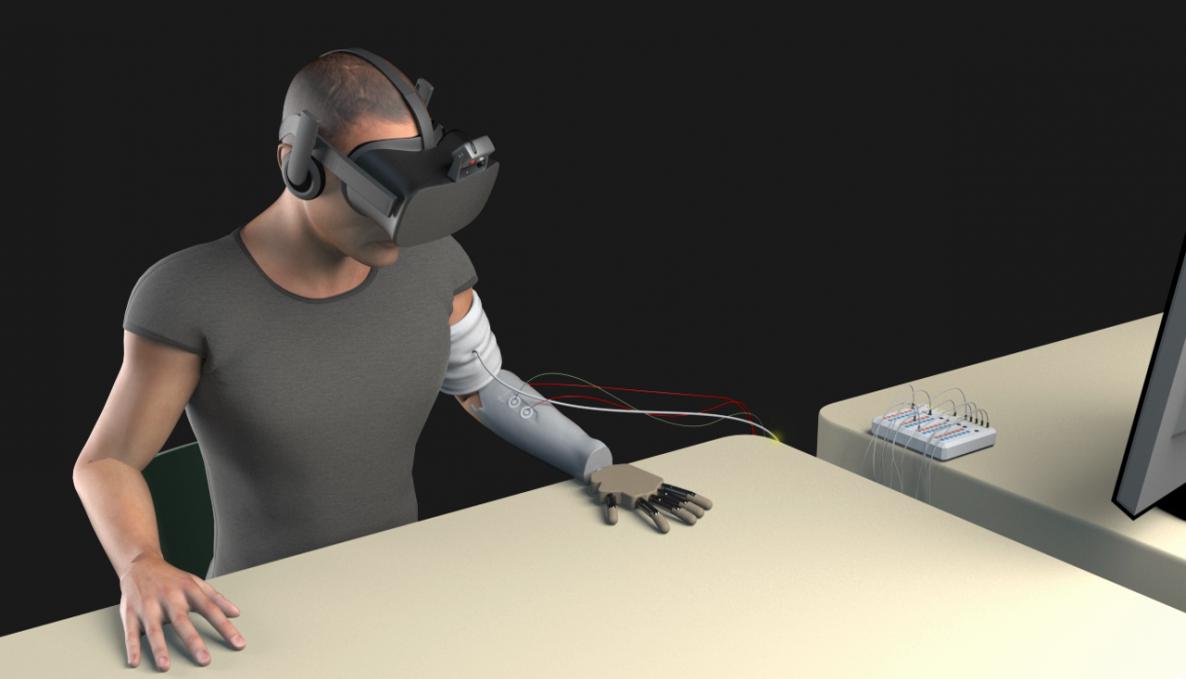Robotic prosthetic limbs and virtual reality: EPFL and sant’anna school biorobotics institute present a novel neuroprosthetic approach that allows brain to feel an artificial hand as its own

Multisensory integration, and in particular the combination of virtual reality with artificial tactile sensations can show how amputees “sense” that the prosthetic hand belongs to their own body. As many amputees opt out of prolonged use of their prosthetic limb because their missing limb does not fit their prosthesis, similarly their own perception of the missing limb simply does not match-up with what they see of the prosthesis.
In the paper published in the Journal of Neurology, Neurosurgery & Psychiatry titled “Multisensory bionic limb to achieve prosthesis embodiment and reduce distorted phantom limb perceptions,” scientists from EPFL (École Polytechnique Fédérale de Lausanne) and Sant’Anna School Biorobotics Institute demonstrated that amputees can now embody their prosthetic limb permanently.
Scientists presented a novel neuroprosthetic approach that combines peripheral neurotactile stimulation—inducing tactile sensation on the missing limb—and immersive digital technology—providing visual illumination of the prosthetic hand. They tested in two patients having an amputation whether coherent multisensory visuo-tactile neural stimulation induce higher prosthesis embodiment and reduce the distorted perception of the phantom limb. Patient 1 and patient 2 (trans-radial left forearm chronic amputees) were implanted with transverse intrafascicular multichannel electrodes which induced the sensation of a vibration in a circumscribed skin region. Neurotactile stimulation was coupled with automatized visual illumination of a skin region on the patient’s prosthetic hand that corresponded to the location of touch sensations experienced on the phantom hand.
“Patient 1 and patient 2 patients reported feeling as though the prosthetic hand belonged to their own body and felt as though their phantom limb had extended into the prosthetic limb. In fact, their phantom limb extended during the experiment, and remained extended for up to 10 minutes afterwards– said Silvestro Micera, Professor of Neuroengineering at EPFL and Sant’Anna School Biorobotics Institute.
"The brain regularly uses its senses to evaluate what belongs to the body and what is external to the body. We showed exactly how vision and touch can be combined to trick the amputee's brain into feeling what it sees, inducing embodiment of the prosthetic hand with an additional effect that the phantom limb grows into the prosthetic one," explained Giulio Rognini of EPFL's Laboratory of Cognitive Neuroprosthetics.



